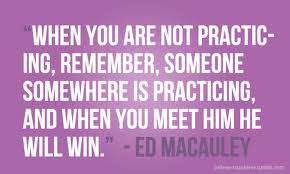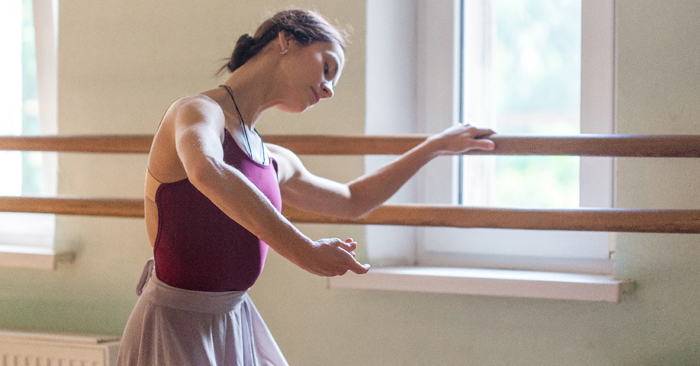For studio dancers, input typically comes in the form of dance practice (rehearsals, solo lessons, cleaning sessions, technique, conditioning, etc.).
Input = Output is an important concept to accept and embrace. When results are measured, it is important to consider this equation. Did you invest the work (input) that was required to produce the outcome (output) you desire?
Beyond taking the initiative to contribute input, you must also measure the productivity, quality, and value of the input.
The tips below encourage a productive practice environment:
1. Be Prepared
Students should prepare for dance practice sessions. Whether they are rehearsing a single piece or a repertoire of work, they should review the material and be mentally engaged and ready when they enter the rehearsal room. Students should: (a) know the music, (b) know the choreography, (c) know their formations and blocking, and (d) know their strengths and weaknesses.
2. Be Open to Honest Feedback
In the dance practice environment, students need to be physically and mentally prepared for constructive criticism. While sometimes it is difficult to hear, the feedback will make your routine as stage ready as possible. Keep in mind that you would rather receive the feedback in the comfort of your home studio versus from a judge in the competitive environment.
3. Be Ready for Repetition
You will likely practice your routines A LOT. Some days, you may practice certain segments or moves A LOT. Be ready for this level of repetition. It may be frustrating at times, but ultimately it will give your routine the polish and cleanliness it needs.
4. Every Person Counts
Know that every person in your routine is a contributing factor in the success, look, and polish of your overall performance. Be a leader and encourage others to step up. If every person is committed to the success of the routine, it will show.
5. Details Matter
Be serious about details. Precision, fluidity, timing, performance skills, and lines of the body are details that matter in the overall appearance of a routine. Do not underestimate their power.
6. Embrace Adjustments
Sometimes, choreography has to be tweaked and adjusted. Be open minded to these changes.
7. Take Technique Seriously
Your routines will be weak without technique and conditioning. Do your part to make yourself a strong, technically proficient dancer.
8. Show Up
Attend your classes. Attend your rehearsals. Be sure to attend everything you need to attend. Consistence attendance is a key factor in the success of dancers and their routines.
9. Retain
Remember your corrections in class. Retain corrections for choreography. Apply corrections from your performances.
10. Make It A Habit
Aristotle said, “We are what we repeatedly do. Excellence, then, is not an act, but a habit.” Make excellence your habit.




